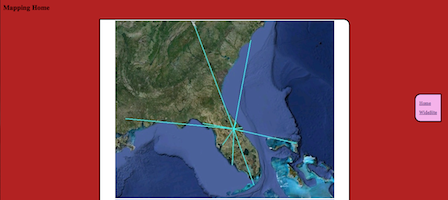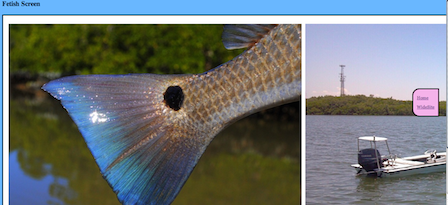Our [Electrate] Stories
Explicating Ulmer's Mystory Genre
Marc C. Santos, Ella R. Bieze, Lauren E. Cagle, Jason C., Zachary P. Dixon, Kristen N. Gay, Sarah Beth Hopton, Megan M. McIntyre
Reflection: Zachary P. Dixon
1. What work does a mystory do?
Because of dramatic shifts in both recent histories and technical developments, the content and knowledge possibilities that exist in a digitally-enabled world are fundamentally different from those embodied through literacy. The alternative, electracy—while not yet a settled project—is recognizable by its dissolution of traditional notions of the linearity, an increased value on the image over narrative structure, and the affective power of multimodality. By focusing on the influence of the digital form and on the production of specific texts, the mystory project highlights the gaps between literacy and electracy. These gaps, characterized by the limitations of traditional literacy and its inability to fully account for the possibilities enabled in digital multimodality, can help illustrate the possibilities for both future cultural production and change.
I believe that Gregory L. Ulmer articulates the mystory as a personal narrative that defies the conventions of literacy by rejecting the linear narrative in favor of disconnected image driven scenography. The alternative narrative structure Ulmer tries to develop intends to reveal the inherent differences in the function of a digitally-enhanced environment by drawing explicit attention to form. In other words, Ulmer’s specific attention to the assemblage practice with the mystory—where images are selected and arranged in deeply personal and expressive ways and where new meanings are constructed via the assemblage of the author—is meant to highlight the inherent possibilities for the creation and dissemination of knowledge embodied in digital information and communication technology. Instead of the limits of the narrative arc promoted by literacy, the assemblage of the mystory, and of electracy, allows for infinite modes of expression.
2. Does the mystory realize Ulmer’s aspirations?
Yes and no. I will start with the no. If Ulmer’s aspirations truly are to create a pedagogical exercise that challenges the paradigm of literacy as the primary mode of expressing, communicating, and relating to knowledge, I’m doubtful that the mystory lives up to the billing. Despite the mystory’s radical reappropriation of the image and design to embrace alternative narrative structure, I think that Ulmer ultimately fails to provide students with the tools to break out of the mold. I can see how students could simply reproduce the same constraints of literacy in electracy. Simple example: starting with a prefabricated narrative in mind and creating a mystory to match. While Ulmer’s focus on a punctum, emotively-driven articulation of knowing-by-feeling is promising, I feel like the mystory does not do the necessary ground work of exposing and challenging the root of the mind-body split that represents a core problem of literacy.
Now for the yes. I think that the same punctum, emotively-driven articulation of knowing-by-feeling that Ulmer fails to enable on a global level is readily (and powerfully) experienced on the personal level. Following Ulmer’s attention to the mystory as an aesthetic, poetic, and artistic exercise, I found the opportunity (and the call) to create something that was not directly tied to value-as-product very enjoyable and beneficial. The mystory’s process of assemblage where bits and images and brevity are purposefully (often painfully) recombined also served to highlight the sort of innovative processes of construction that the digital environment permits.
3. Can/should you learn Ulmer while learning HTML and CSS?
There are two separate questions here; thankfully, the answer to both is yes. Clearly it is possible to learn Ulmer’s dense theory concurrently with HTML and CSS. I say clearly because I, with no experience with any of the aforementioned elements, was able to learn the triad. Was it easy? No. Possible? Yes.
Now, should all three elements be learned simultaneously? I think the answer is a definite yes. While learning a new theoretic framework and a language for expressing that framework represents a daunting task—perhaps even one which cannot be fully completed in any reasonable amount of time—I think it represents a critical exercise, particularly in light of Ulmer’s call to electracy as a unique epoch in human expression. No matter how you slice Ulmer, he is always trying to move towards new ways of thinking and doing. I think that to truly embrace Ulmer’s project, it is critical to learn both the concepts and the tools that enable said project. For the mystory, the concept and the tools means the theory and HTML/CSS. One without the other leaves both wanting, particularly if we—as I think that Ulmer wants us to—want to understand why we’re doing either.
4. Should a mystory be public or private?
From both my reading of Ulmer, and my experience developing the mystory, I feel that the mystory is designed to be a public expression. The purpose of Ulmer's overarching EmerAgency project, of which the mystory forms a critical part, is to change the world. The mystory aims to invert the values and associations of literacy, to highlight the idea that, “the kind of ‘belonging together’ experienced in electronic culture will not be the same as what was fostered by the novel and print journalism” (Ulmer, 2003, p. 5). Ulmer’s insistence on the effects of electracy on relationships (macro and micro) reinforces the mystory’s place among the publics as, if nothing else, a digital monument to alternative modes of expression and relating.
While a mystory might not be interactive on an obvious level (no call and response is built into the project) I think that fundamentally, by placing your work online, you are engaging in a form of interactivity, even if it is just with yourself. Putting personally charged information in a public forum, particularly one that is so visually confrontational (seeing it on the screen), forces you to acknowledge and confront the audience implicit with that forum. Confrontation is a powerful experience that deeply affects the rhetorical decisions of the author. At the very least the confrontation with the digitally abject makes you second-guess everything you produce, which often dramatically changes the final product. Second-guessing and self-editing are informative in the way they lay bare the rhetorical acts involved in seemingly simple decisions and cathartic in the way they allow the author to wrestle with the slight—but often vital—differences between their interior and public selves
In similar ways I think that the mystory has real value, mainly because of the rhetorical reflexivity that it demands. If you’re not struggling (even slightly) with what you produce—and how the medium enables this struggle—then you’re probably not doing it very well. As graduate students, struggling with the questions that the mystory raises (what to do, how to do it, personal limits, genre, and societal limits) is pretty critical. I really think that the way that Ulmer asks us to engage with this project in ways that do not reflect traditional scholarly practices are also really valuable if for no other reason than those differences. Sometimes new and different are very good things.
5. Did you experience an aha moment during your mystory process?
I believe that I did experience an aha moment during the Entertainment Discourse element of the mystory. I felt "eureka!" when, after remembering and reflecting heavily on my childhood memories of the anime series Robotech: Macross Saga, I was able to draw out a very personal connection between my lifelong relationship between myself, television, and science fiction. Somehow developing this section of the mystory really touched a nerve that exposed memories about being bored and alone as a child and how those emotions drove me towards increasingly complex imaginary worlds and how anime helped satisfy that urge. I think that somehow, much to Ulmer’s credit, has to do with his call to rewatch the series and to remember and then reflect on that memory. After the meta-exercise of the Entertainment Discourse, searching for the images and colors and design features to support the emotions that the exercise stirred up really served to catalyze the raw feeling into an articulable understanding. I think my experience with the Entertainment Discourse is what I think Ulmer’s Electracy project is about, at least in part: to generate emotion and feeling through the punctum of interacting with the image instead of the more logical progression from narrative to comprehension to feeling embodied by literacy.
6. What particular part of your mystory is your favorite (and why)?
I have two favorite parts of my mystory: during its construction I enjoyed the assembling of images; in retrospect I love my Quest Schema element. During the process of constructing my mystory I really enjoyed assembling the various images that Ulmer called for; I loved simply searching for and collecting the images that I felt captured the punctum that I was trying to express. Part of the joy of the image experience was its purely nonacademic practice. As shameful as it may be, I simply searched for images and plucked them from their home according to my emotional connection and their visual appeal without regard for citation or convention. For me, because the mystory is such a purely personal experience, there was no harm in assembling images from anywhere in the World Wide Web for what amounts to a kind of new-media found-art piece. That freedom to collect and assemble without the formality of conventions was really liberating, a kind of exercise in being an electric bad-boy.
In retrospect the Quest Schema is my favorite element of my mystory. Oddly enough, I remember being vexed by the element in practice. I found the practice of trying to describe my personal life in terms of a quest narrative very challenging. I grappled very seriously with how much of my self to expose and how best to articulate that exposure into the format Ulmer provides. Ultimately I chose to be very honest and straightforward, and I feel very rewarded looking back on it. Perhaps the most rewarding, and my favorite part of the Quest Schema, is that I was finally able to assemble a collection of media—text, images, CSS formatting, and videos—that truly captured how I felt about the material. No other element of my mystory, I feel, better meshes the punctum, new media, and my personal story.
5. What else do you want to say?
At the beginning of the mystory project, I was tremendously excited. I was captivated by the early chapters of Ulmer’s book and the way that he spoke about the development of a personal Wide Image and the possible identification of a life ”themata.” The possibility of identifying an overarching, guiding ethos—one which promised, like for Einstein, to guide me through the navigation of my life—was very alluring. I particularly enjoyed Ulmer’s presentation of the mystory as a sort of entrance into EmerAgency. The idea that a nonlinear, image-based narrative—centered around the punctum—could affect material change really spoke to my previous experiences in creative nonfiction, where the cathartic benefits of personal exposure and exploration is a familiar feeling.


